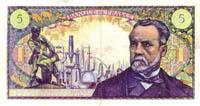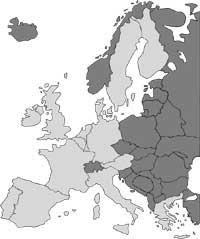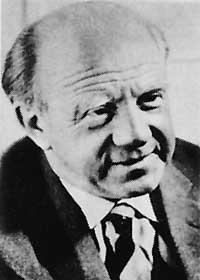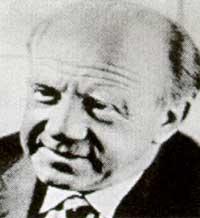The value of science and scientists
1999/11/28 Kortabarria Olabarria, Beñardo - Elhuyar Zientzia

He has also had a more curious way to thank what society, science, and the scientist have done in their favor. One of them is reflected in money, in banknotes, as if society wanted to put price on the work of scientists.

In the summer of 1991, in a conference of spectroscopy held in London, an Austrian physicist used transparencies to dress his speech. In one of them he presented a ticket of 1,000 Austrian shillings. At the bottom of this ticket appears the image of the physicist Erwin Schrödinger, and the Greek letter and which aims to reflect his greatest discovery, representing the wave equations of quantum mechanics. However, to that physicist it seemed little, since in the largest banknote of Austria, the 5,000 shillings, instead of Schrödinger appears Mozart.
The Germans also have their own homage to science. In the current 10 mark ticket appears the mathematician Karl Gauss. Not only that, together with its image, have placed the Gaussian curve and detail of the formula of the Gauss bell. We cannot deny that the ticket of such precision has the German sense.

In France, as you could imagine, they pay tribute to Louis Pasteur on the 5-pound bill. In this paper, in addition to the image of Pasteur, appear his two main discoveries: on the one hand, a young man who is receiving the denture of a dog, reflection of the rabies vaccine, and on the other, the crystals and the vine that want to express the separation of enantiomers.
The list of tickets so far continues. For example, the 1,000 zloty banknote from Poland, with images of Copernico and his solar system. As in Italy, there are tickets dedicated to Marconi, Galileo Galilei and Alessandro Volta. In Greece, the 100 drastic banknote takes the philosopher Democritus in its front as a reference on its atomic composition and matter. Einstein has his own coin, 5 Israeli lirots. New countries, like Croatia, have also put scientists in their currencies. The case of Croatia is also significant, since the first banknote that separated it and removed it from the old federation of Jugoslavia in 1991 put the image of a scientist of the physicist and mathematician Ruger Boskovic.

In England scientists have already lost the hope of appearing on the front of the tickets, where it is essential to put the figures of kings first of all. However, at the back of the tickets, some place has been given to scientists. Isaac Newton appears on the one-pound old banknote, along with a prism, telescope and an elliptical orbit, while Michael Faraday appears on the current 20-pound banknote.
In the history of banknotes, which is not too important for the history of science, examples can be curious, but they fail to reveal the entire collection. More could be put: Dutch florins with microscopist Anthony Van Leeuwen, physicist Simon Stevin and scientist Christian Huygen, who never went on the market. In France, in addition to Pasteur, there is a 500 pound ticket with Marie and Pierre Curie; in Italy, 50,000 lessons with Leonardo Da Vinci; in Spain, 2,000 pesetas with Mutis; in Sweden, 100 and 1,000 crowns with Carl Von Linné and Jakaldo Berzelius; in Brazil, 50 exponents of Wagoe and 10,000.
Published in 7

Gai honi buruzko eduki gehiago
Elhuyarrek garatutako teknologia






